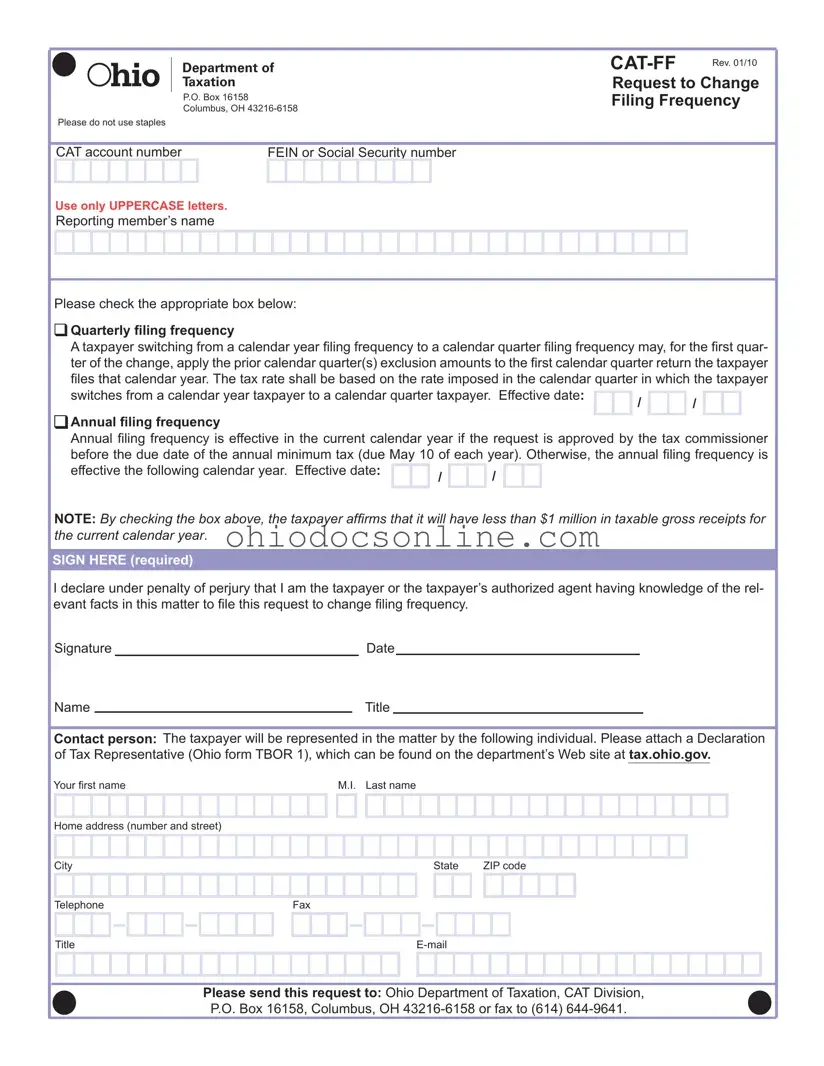Ohio Cat Ff Template in PDF
The Ohio CAT Ff form is a request form used by taxpayers to change their filing frequency for the Commercial Activity Tax (CAT). This form allows taxpayers to switch between quarterly and annual filing, depending on their specific circumstances and gross receipts. Understanding how to properly complete and submit this form is essential for compliance with Ohio tax regulations.
Open Editor
